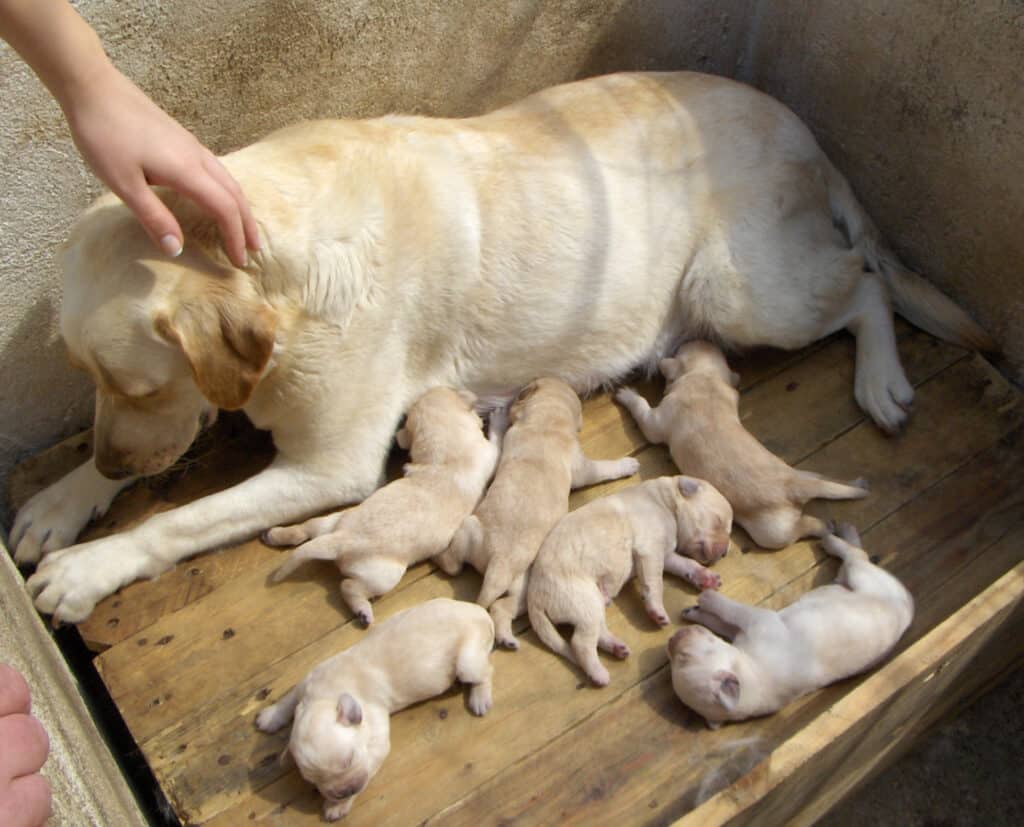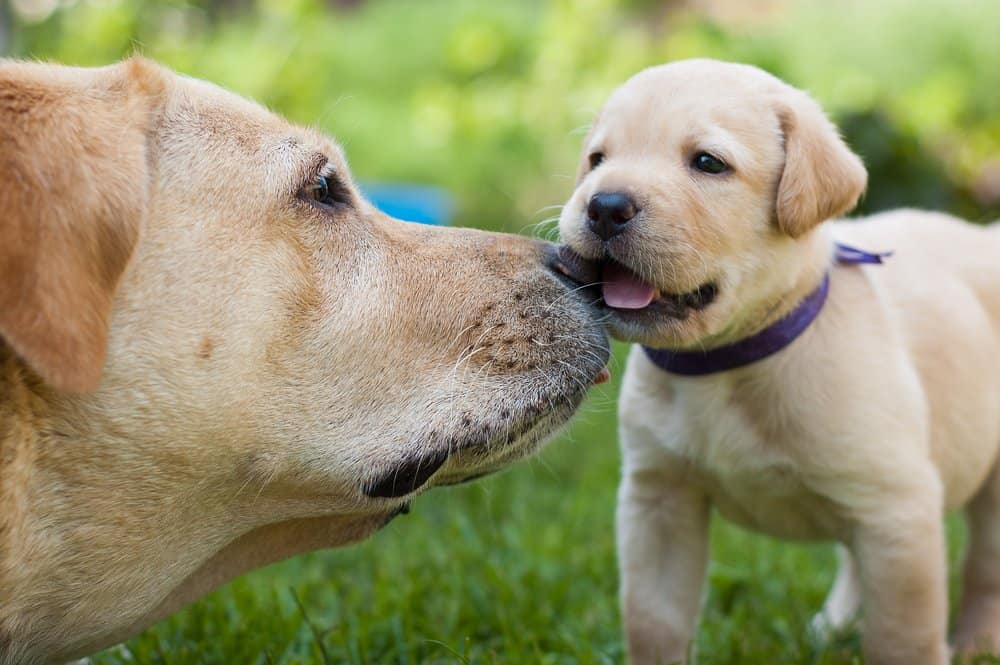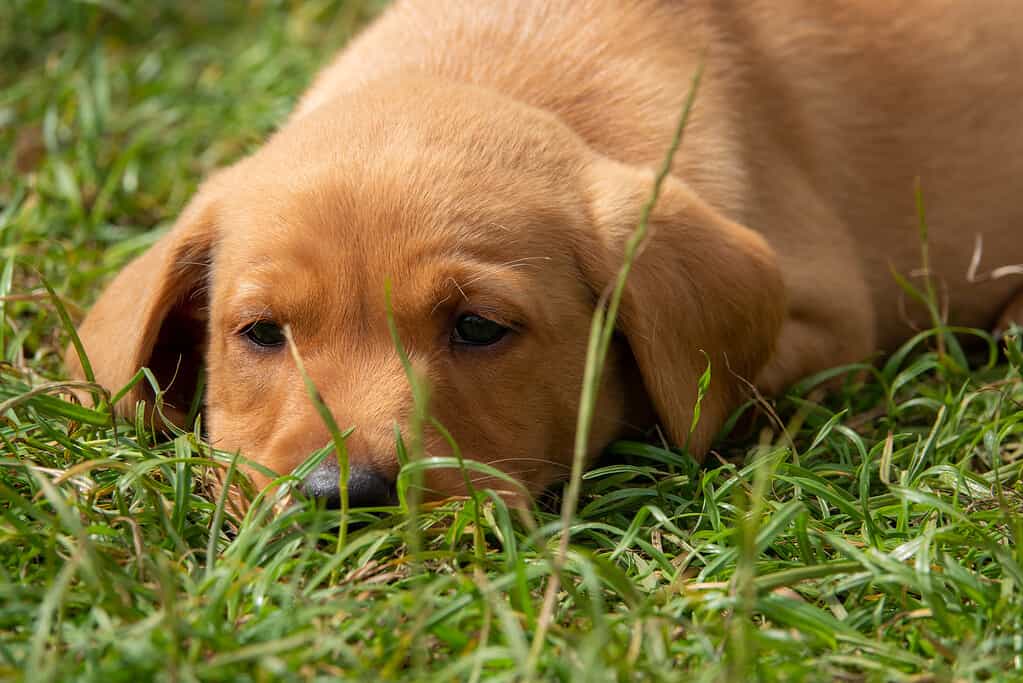Who’s the biggest goofball in your house? It might be your dog if you adopt a Labrador retriever! This sweet, friendly breed loves to play. Owning a Labrador is like having a furry best friend who never wants to leave your side.
Here’s a detailed look into adopting Labrador retriever puppies, including tips on where to find your pup and a breakdown of expected growth.
How Much Do Labrador Retriever Puppies Cost?

If you’re lucky, you might find a popular, trustworthy breeder selling Labrador retriever puppies for less than $500.
©Manokaran M / CC BY-SA 4.0 DEED – License
In 2024, purebred Labrador retriever puppies cost between $240 and $2,000. Pups with well-known, healthy parents fetch prices at the higher end of the range, while older puppies and those with unknown lineages are cheaper.
You might even be able to find a “Lab” for free if you check with surrounding rescues. However, finding a young puppy this way will likely be hard.
Once your soft-furred puppy starts trotting at your side, expect to spend about $75 to $200 monthly in ongoing care. This includes food, toys, vet fees, and surprise expenses like replacing chewed-up shoes.
Tips for Adopting Labrador Retriever Puppies
The first step to finding your new buddy is selecting a reputable rescue or breeder. Adopting the first Lab puppy you find without research could leave you with a sick pooch. Your money would also be supporting a situation that doesn’t look out for the dog’s best interests,
Dog rescues don’t operate for profit, so you can usually trust what they say. However, with that being said, they may not have much information to offer. A dog might be dropped off without the staff learning any of its history.
Additionally, these dogs may have already developed health or temperamental problems, although this is something a rescue or shelter should be able to disclose.
Adopting From a Breeder
Ethical Labrador retriever breeders exist, and they’re easy to discover if you take your time. Talk to people you know and read reviews. You can also check out the American Kennel Club’s marketplace. They have strict standards for the breeders they promote.
Let’s talk about a few signs that a Lab breeder is NOT someone you should trust.
- You can’t find any reviews.
- They tell you conflicting information.
- They allow you to take the puppies home too soon.
- Information about the puppy’s parents and possible health issues is difficult to find.
Good breeders prioritize transparency and want you to have as much information as possible. They care about finding their puppies nice families and won’t send them home to anyone unvetted.
Unfortunately, breeders of this caliber usually have a waitlist. You probably won’t be able to get a dog the first day you make contact, but you will have time to puppy-proof your home and adjust your life so it has room for a hungry, happy ball of energy.
Labrador Retriever Growth and Milestones

Puppies should stay with their mothers for at least eight weeks.
©iStock.com/Suzana Dreno
Labrador retrievers weigh one pound when born, yet they don’t stay that small for long. By the time they’re eight weeks old, the typical labrador retriever weighs ten to 15 pounds. The rapid growth continues from there, with the dogs gaining five to ten pounds a month until their weight stabilizes when they’re around one year old.
By then, a lab might weigh 55 to 80 pounds, as much as a small elementary school child. They may gain a little bit more weight over the next year, but it won’t be so dramatic. You can stop feeding puppy food at this point and switch to a recipe designed for an adult who isn’t undergoing growth spurts.
You may want to wait until your Lab is at least one year old to spay or neuter them as well. Earlier spaying and neutering is possible, but it may be less healthy.
Training
Labrador retrievers are smart enough to save lives as search and rescue and service dogs, so training them is often pain-free. They’re clever and love to please the people around them.
Kick off your training regimen while your puppy’s still young. If they’re old enough to leave their mothers, they’re old enough to start training! This includes housetraining and obedience training. Just remember to be gentle and use lots of praise.
Agility training is more strenuous, so you should wait until your dog has the muscle strength and athleticism to handle the moves.
Labrador Retriever Puppy Pictures

Your new Lab can come to your home when it’s around eight to 12 weeks old.
©Anesssa/Shutterstock.com

Labrador retriever puppies grow quickly.
©Caroline Anderson/iStock via Getty Images

Countless families with children have Labrador retrievers for pets.
©cynoclub/Shutterstock.com
The photo featured at the top of this post is © Caroline Anderson/iStock via Getty Images
Ready to discover the top 10 cutest dog breeds in the entire world?
How about the fastest dogs, the largest dogs and those that are -- quite frankly -- just the kindest dogs on the planet? Each day, AZ Animals sends out lists just like this to our thousands of email subscribers. And the best part? It's FREE. Join today by entering your email below.
Thank you for reading! Have some feedback for us? Contact the AZ Animals editorial team.






